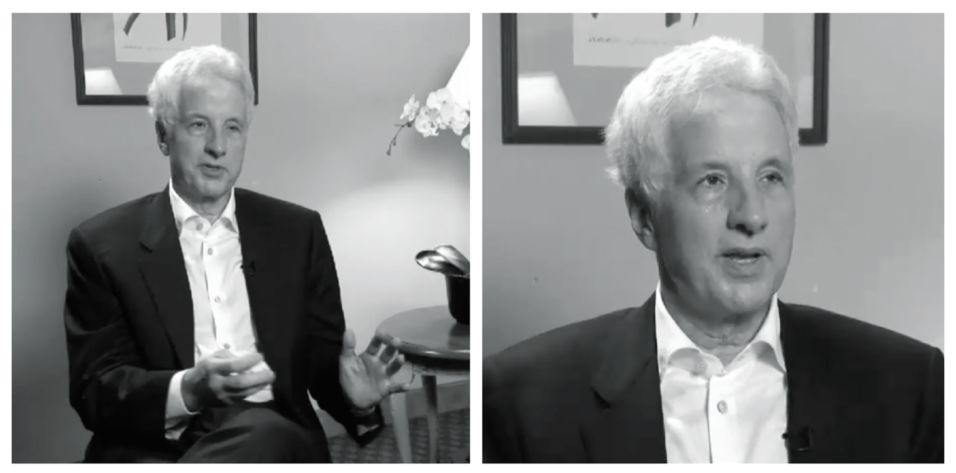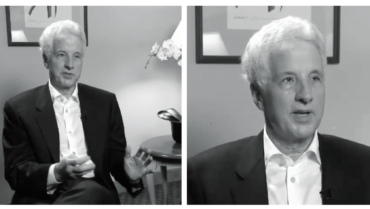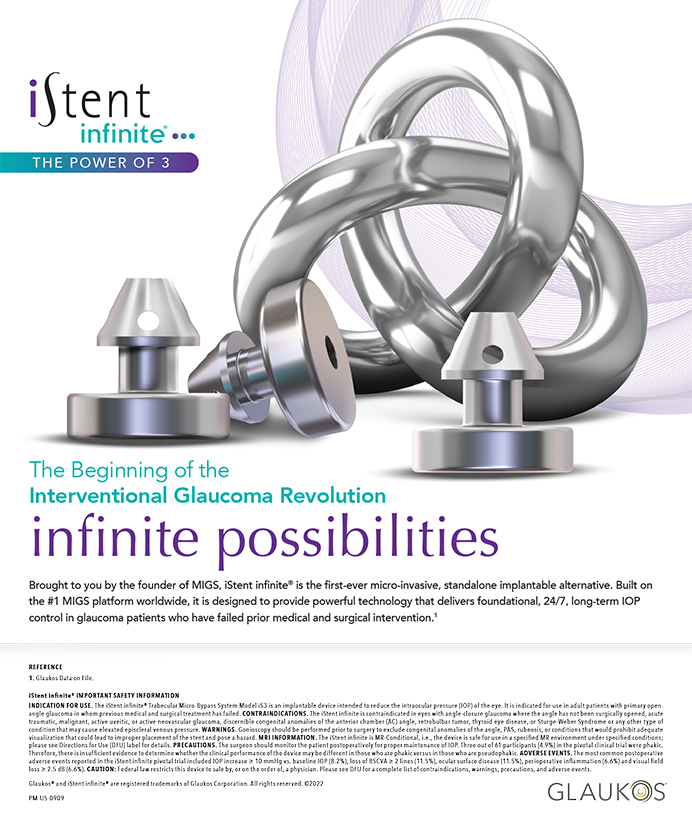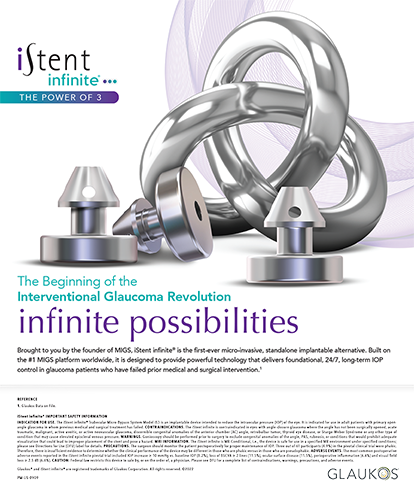Dr. Slade is an anterior segment surgeon in private practice at Slade & Baker Vision in Houston. He is well known as an innovator in refractive and cataract surgery, having performed both the first LASIK procedure and the first laser cataract surgery procedure in the United States. In this interview, he shares insights on working with industry, picking winners, and raising daughters.
Interviewed by Laura Straub, CRST/CRST Europe Editor-in-Chief
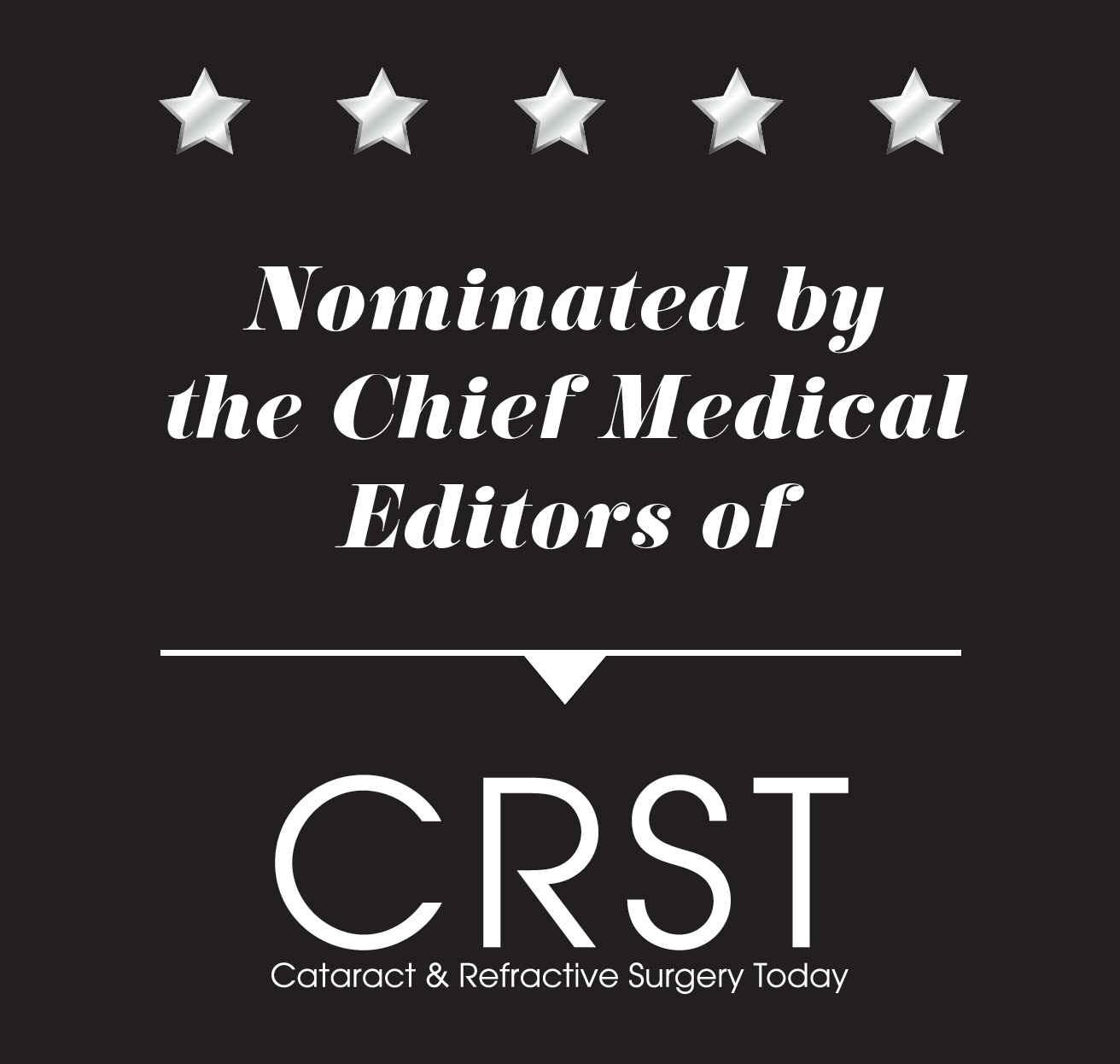
BMC: Who or what drew you to ophthalmology?
Stephen G. Slade, MD, FACS: Dumb luck. No, I’m serious. I got out of medical school really not knowing what I wanted to do. I went through all the specialties and learned what I didn’t want to do. I thought I might want to go into orthopedic surgery or neurosurgery—I was interested in hand surgery and plastic surgery. I knew I wanted to do some kind of delicate surgery, but I really didn’t know what type specifically. During my internship, I looked around at the people in my class who I thought were intelligent, and several of them went into ophthalmology. So that’s where I went.
BMC: What do you consider to be your greatest professional achievement?
Slade: Trying hard for the patients. Our motto at my clinic is, “Patient first.” No matter what we do, we always try to put the patient first. It sounds Boy Scout-ish, but that’s what we try to do. I’ve stuck to that goal throughout my 28 years of practice.
BMC: What is something you’d like to do that you haven’t yet accomplished?
Slade: There is one patent research idea that we started working on that I would love to see turn out because I think it would be valuable for patients. For the most part, I am satisfied with my accomplishments, the patient care I’ve provided, making great friends, and being involved early on in many technologies.
BMC: You mention getting involved in technologies early on. You and Stephen Brint, MD, were the first two US surgeons to perform LASIK. How did you get to be involved in that? What was it like performing that first procedure?
Slade: I was doing lamellar keratoplasty with a keratome—myopic keratomileusis—which was sort of a precursor to LASIK. Steve Brint was one of the first ophthalmologists to get an excimer laser. We put the two together for something we called excimer laser myopic keratomileusis.
We would take about two-thirds of the cornea off, about 350 µm, with a manual keratome. Then we would take that piece of corneal tissue, walk it over to an excimer laser, modify it with the laser, then bring it back and sew it onto the patient’s eye—needless to say, it was an involved procedure. The laser manufacturer at the time, Summit, started a trial called the Excimer Laser Myopic Keratomileusis Trial, and Steve invited me to be an investigator, so I got a Summit excimer laser.
That was a wild trial. We would take the patient into the OR, slice off that big hunk of cornea, and then literally put on coats and walk the tissue across the street to the building that housed the laser, go up the elevator, treat the tissue, come back down, go back into the OR, rescrub, and sew it back on. One time we got on the elevator to go back up to the OR, and there was the patient’s family. They knew that we were operating on their family member, but there we were, me and Steve, with all of them in the elevator together. It was awkward.
Anyway, in the course of that trial we did the first true LASIK in this country, in that we made a flap and did the ablation on the patient’s eye in situ, rather than moving the tissue to and from the laser.
BMC: How has LASIK evolved over the years? Are you proud of how far the procedure has come, and what is left to be accomplished?
Slade: LASIK has become a wonderfully mature technology, or modern LASIK. We did the first LASIK in the United States here in Houston in 1991. When we first did LASIK, we were making the flaps with manual keratomes. The lasers fired between three and six shots per second, there was no eye tracking, and we used very basic nonaspheric ablation patterns.
Now, of course, we have eye trackers, femtosecond laser keratomes, excimer lasers that fire 500 to 1,000 shots per second, scanning laser patterns, and sophisticated aspheric ablation patterns. We also have customized wavefront- and topography-driven ablations.
I’m proud of how much technology, effort, and innovation has gone into LASIK. It’s become a wonderful technology—so much so that I wish we could go back and treat some people who were previously left behind, those with irregular astigmatism, decentered LASIK, or trauma, because we can now address these issues with complex ablations.
Modern LASIK, the way we do it now, is such a good surgery. It’s the most successful, most accurate surgery in medicine, in my opinion.
BMC: More recently, you were among the first US surgeons to perform laser cataract surgery. How have you kept yourself in position to periodically be one of the first to use new technologies like these?
Slade: You know, I’m not sure. We did have the first laser cataract surgery device in the United States and were the first to do the surgery. We had the first laser flapmaker in the United States, the IntraLase (now Johnson & Johnson Vision). We implanted the first Crystalens (now Bausch + Lomb), and we’ve had few other firsts.
Honestly, this may sound like a copout, but I think a lot of it is just luck—knowing the right people and being in the right place at the right time. My contribution might be that I understand how to work with early-stage companies and technologies. When companies come to you with an idea, you have to realize that you’re sort of the test dummy, if you will. It’s a huge responsibility because you’re using it on your own patients. There’s no one to learn from because you’re the first. You have to innovate as you go along and figure out the best techniques and how best to use it, whatever it may be.
When you work with early-stage technologies, you have to know how to be honest and frank with the company about what works and what doesn’t. You also have to know that you talk to the company, you don’t go out and shout to the world, “This device doesn’t work.” Instead, tell the company, “This is the problem.” You must be part of the team.
Many people don’t realize that it takes 5 to 10 years to iterate a device from the first mock-up to the finished product; you have to work with the FDA, work with engineers, do the clinical trial. The people in the company are making a bet with 10 years of their life—maybe one-third of a 30-year career—that their product is going to work. Sometimes it doesn’t, and sometimes this is the only product they have. If it fails, I’ve still got my day job, but for the people in these companies, the news is considerably worse. They’re working for not a lot of money, maybe with some venture funding, hoping it works.
Even more importantly, it is also a serious deal for the study participants and potential patients for any new technology. I feel an obligation to those patients to do the best I can.
BMC: Working so much with these early-stage companies, have you learned to discern a good opportunity from a bad one? How do you decide that?
Slade: Some people in the industry have told me that I have a good ability to pick winners. I’ve turned down a lot more projects than I’ve gotten involved with; a lot of that is just gut feeling, looking at something and saying, “I like this,” or “I don’t see how this will work.”
There was a lot of doubt when LASIK was introduced, but I knew it was going to work. When I first started showing videos, people would say, “That’s crazy. You’re splitting the cornea open with a keratome? We already have PRK. All we have to do is have the patient lie down and do an ablation, and now you want to slice open their corneas? This is back to RK days. We want to go away from RK.” But I saw it and said, “This is going to work.” A lot of it is instinct.
To someone who is starting out in consulting, I would say to be aware that this is what you’re doing. In your career, you’re going to be presented with different projects. Try to be conscious while you’re making the decision of whether to get involved. Step back, watch yourself, try to learn something, and maybe try to teach something. Whatever it is, be honest in your assessment. I think I have done that, and I think it has helped me to mostly pick winners in technology.
BMC: You’re a Houston native. What’s it like to practice in the place where you grew up?
Slade: I like being here. I was born in Houston, and my family has been in Texas since the 1830s. I have friends from college who are still here. I understand that California is wonderful, and New York is New York, but I like where I am. It offers some advantages, mostly personal. When my mother got an extended illness, I was here and able to help take care of her. It meant a lot to me to be able to do that, and it would have been painful if I was in Vancouver or somewhere else.
BMC: You have children who are approaching the age of entering the workforce. What advice do you have for them?
Slade: We have two daughters, ages 18 and 24. The 24-year-old is out of college, and she has a job in the fashion industry in New York. Our 18-year-old just started at New York University. So they’re both in New York City, which is something we never envisioned. We hope that they will some day come back to Texas; I think they will, but they’ll probably come back to Austin, not Houston. Austin is for Texans who are lost. And people from New York City.
The advice I have for them is almost embarrassing because it’s so stodgy and old-fashioned: Practice self-discipline and take responsibility. Have the self-discipline to make yourself reliable, to do well, to do a little work every day, and to work hard. And take responsibility. When you screw up, just raise your hand and say, “I screwed up here.” Take responsibility for every little thing. Don’t procrastinate. Go ahead and make the decision, and if it doesn’t work out, learn from it.
It is also important to me that they know how to be an honest, kind person. Stick up for friends and be loyal to them. These are the qualities that, if I passed away, I would hope people would say about me. You would think that in this day and age I could come up with something snazzier, but it’s those simple qualities that matter. To me, things get simpler as I get older. I don’t know how else to say it; those are the things that I value now.
Somebody told me this once, and I thought it was amazing advice: “We know right from wrong. We know the right thing to do. Almost all the time, we know what we should do in a given situation. The trick is that it’s so hard to go ahead and do the right thing.” We know what we’re supposed to do—it’s just hard to do it sometimes.
BMC: If you had to nominate one creative mind in ophthalmology, whom would it be and why?
Slade: Creativity is an amazing talent. This is an outside-the-box choice, but I would nominate two people, and they are not ophthalmologists: David Cox and Adam Krafczek, the cofounders and president and vice-president, respectively, of BMC, the publisher of CRST. They are creative, and they have done things to advance the specialty. They helped to create the American-European Congress of Ophthalmic Surgery (AECOS), they publish a range of subspecialty magazines in ophthalmology, and they produce meetings—all of which have valuable content. The team that they have put around them is really creative.
Is there an amazingly creative ophthalmologist I could name instead? Sure. There are many, but their creations tend to be more scientific. The work that Dave and Adam do is creative communication, which is a great value in the information age we live in.
Dave and Adam came into a field where they didn’t have a medical background or similar experience, but they built a creative company that brings value to the field. They are amazing guys with complementary talents and an ability to pick great people to work with them. They truly love the field and our people, and it shows.

